From the zucchini, you can make a huge amount of satisfying and healthy dishes - casserole, stew, caviar, thin pancakes, pancakes, salads, pie and even jam. They do not care if the cucumbers are far away. Then, for the winter, the zucchini can be marrying, cutting on the circles, to do lecture in tomato sauce or Ketchup, Adzhik, "Techin Language", to make all sorts of assorted. How to grow zucchini, which will delight a generous harvest juicy, tasty and diverse in color and the form of fruits?
Characteristic Kabachkov
These are annual plants, representatives of the pumpkin family. Their important advantages: unpretentiousness, multipleness, strength. Now, most often gardeners choose bush forms, but there are grades of semi-leaf or giving long vacations. If the shape is a bush, then the stem is thick, it stands straight, it has hard leg. The leaves are large, tough, with five pointed blades are located on long stiffs. Their color is light or dark green. Sometimes there are white specks. The root system is represented by a rod root, from which side and apparent roots are sprawling. Flowers yellow (or orange) are similar to large bells. On one plant, both female and men's flowers are present. The fruits are cylindrical, elongated, rounded, pear, oval, ovoid. Coloring is diverse: white, yellow, slightly greenish, dark green, orange, striped. Fruits on zucchini are formed 40-60 days after shoots were crushed out of the ground. Up to late autumn, with good weather on zucchini, you can observe the flowering and education of new bandy. Seeds of zucchini germinate even at + 9 ° C, but faster this process flows at a temperature of from 18 to 24 ° C. At the same temperature, the zucchini is best developed and form fruits. If the temperature drops to + 6 ° C, then a couple of days this vegetable culture will calmly take place. But the frosts on these plants are destructive. For successful flowering and fruiting, the zuccholas necessarily need light. If the zucchini "settled" in the shade, then the bush pulls out, the aging of pollen on female flowers is worse. The taste of the fetus growing in the shade will be lower. Yes, and the diseases are "tied" more often.
The most good zabachki yields are given on loose, fertile lands. They are suitable for Suglink and Chernozem, which at deep steaming were well refilled by the organic.
Variety of grades of Kabachkov
In garden stores, usually the attention of dachnikov is a large assortment of bags with seeds of this culture. It is very difficult to highlight which zucchini varieties are the best. One like the grade tested by time, others love to experiment, acquiring every year new selection work. Basically, when choosing Zucchini, summer houses pay attention to their appearance, a description on bags, sizes, color, dates of ripening, producer, resistance to diseases. Let's try to list in demand and popular from gargrin varieties:
- "Belogor" - its first cylindrical fruits of light green color can be started to cut off on the 37th day after the appearance of shoots from the ground.
- "Gribovsky 37" - a longtime average and white-faced grade, giving persistent crops suitable for long-term storage.
- "Masha" - low bushes, on which large salad painting fruits are formed with a shiny surface. Even if the summer is rainy or roast, these zucchini will not let us down and will still give a crop.
- "Pharaoh" is considered to be the best salad variety having a yellow inside, sweetish, juicy, crunchy. On fertile soils shows generous yields, resistant to gray rot, is reliably stored.
- "Astronomer" - the bushes are tied with cylindrical zucchini pale green painting with delicate skin. The variety is universal, suitable for many regions, is tasty both in latest form and in conservation.
"Raviolo", "Tivoli", "Pasta Factory" - very interesting varieties called "Spaghetti". The flesh of their ripe fruit seems to fall on thin long "flagellas", resembling italian pasta. To enjoy such "spaghetti", these zucchini must not cut for a long time. Technical ripeness reaches zucchini weighing from one and a half to two and a half kilograms, having long been on the weaves after pollination of the flower for another 20-25 days. Of course, you can cut these fruits and before the specified period, but then "pasta" of them are not formed, they will be similar to conventional zucchini. Spaghetti is better to plant near the fence, they have very long vacations that love "scatter" by other ridges.
And here are some interesting representatives of Zucchini:
- "Black Handsome" - the name speaks for itself, because Zucchini on the bush is obtained by statitive, shiny, dark green. High-threatened, fruits gives all summer. It is well kept, very suitable for pickling and other blanks for the winter period.
- "Diamond" - the first cylindrical fruits, ribbed at the base, can be cut off for 40-47 days. The peel is thin, dark green color, there are few seeds within this fetus, it is kept for a long time.
- Dracosh is the first fruit, having a dark green color, can be cut off 43 days after planting seedlings. Inside these cylindrical zucchini beige, pleasant to the taste, suitable for salads, marinations and long storage. More important plus: disease resistance.
- "Orange" - round fruits of unusual orange color appear on a compact bush. S cutting start on the 40th day from the moment of sowing, not allowing the increase in the diameter of more than 15 centimeters. Thin variety, high-yielding.
- "Yellow-class" - all summer continuously gives abundant zabachkov yields with bright yellow colorful, tasty both fresh and in casserole, omelets, stew. Inside the flesh, cream or slightly yellowish, juicy, contains a lot of carotene.
- "Zolotinka" is another yellow grade. Fruits have a sweet interior, painted in a stravenous-yellow color. Recommended for food children. From these zucchini, delicious dishes are obtained - stew, fried, baked in the oven, is suitable for marination.
- Zebra is round-elongated fruits having longitudinal dark green stripes, you can start trying on the 40th day after the seedlings moved to the ridge.
- "Tsukesha" - the fruits presented early, they are brilliant, the color resembles a blue fir. It normally transfers the periods of cooling at the beginning of its development, and even more to rot. The fruit is not stubble if he overrered. Great for different types of conservation.
Lovers experiment in the country can offer such varieties: "Kolobok", "Banana", "Aral", "Kanda", "Karam", "Festival", "Ball", "Gold".
In its plot, we usually plant four varieties, two proven and two of the new products.
Zucchini seeds on seedlings
If you want to turn on the zucchini from the cottage in your food, then it should be raised from seed seedlings on the windowsill, and only then move it to the bed. The germination of the seeds of the zucchini remains for a long time - about five years. Observations show that if the dachnik plant fresh seeds, then bushes and leafs are obtained strong, powerful, thick, but many men's flowers are tied on them. Consequently, and Zelentsov will start little. But if the seeds of two- or three years ago were taken to land the zucchini, then the leaves are not so much formed, but will surprise the mass of female flowers and an abundant harvest.
Soak zucchini seeds in a glass with a warm solution of potassium permanganate (all known manganese). Then wrap them into a wet napkin and put on a day in a warm place, for example, in a bathroom near the heated towel rails. The napkin must constantly be in a moistened state. After a day, send these seeds into plastic cups with wet soil - one or two in every cup, blocking two centimeters into the ground. You can use the ready-made substrate for seedlings from the garden shop. "Gardener", "Flora", "Flora" are suitable. Each cup wrap the film or tie in the package. Place them on the windowsill. Usually three days later sprouts appear. So that they do not stretch, immediately remove the film or packages and transfer them to a bright place where the temperature is from 18 to 20 degrees. Moisturize the substrate daily, sometimes loose it. During the day, open the window to break out. If the weather allows, then seedlings can be transferred to beds when each will be two good sheets (do not count at the same time). We usually land our plants in the evening from May 7 to 16.
Cultivation of zucchini in open soil
It is not necessary to highlight the zucchini a large bed. Different varieties can be positioned by different zones of the garden. The main thing is that these places be well lit by the sunshine, they were protected from strong gusty winds. Abundant zabachka yields give, if they are planted after cabbage, cereals, onions, potatoes, legumes, greenery, carrots, radish, siturates. But after cucumbers, pumpkins, patissons on the same place zucchini do not place at least two, and better three years. Already in the fall, try to schedule those places where zucchini will be. And with a people remove all the roots of weed plants, add humus, coarse sand into the clay ground, peat (half a large velocker and two glasses of ash per square meter). In peat grounds add sand and compost (half of the mow), 2 glasses of ash, a bucket of a drum soil, comprehensive fertilizer. If the soil is sandy, then enter the peat, humid and turf (by the bucket), 2 glasses of ash, as well as the "nitroposka" in the amount of tablespoon. If the cultivation of the zucchini will be carried out on separate beds, then make them high and width of 70 centimeters. If you could not prepare the plot from the fall, then the organic is allowed to add in the spring immediately into the wells. In the hole it is necessary to place a liter humoring, a large spoonful of ash and a small spoon of mineral complex. Then all these components are stirred with garden soil. If the soil is poor, then the hole is digging a depth of 30 centimeters, but a diameter of at least 35 centimeters. A hole must first be filled with humus to 15 centimeters of height, and then add garden land. There is preferably to make a distance of 40-50 centimeters between the wells. Each well, first be swallowed with warm water, and even better - a solution of manganese. After the solution has absorbed, send there a seaside plant along with a room of land, which was previously in a cup. If the seedlings stretched out, then the plants can be opened almost to the seedlings. If the ground is dry, then the landing is carefully published. It is advisable to put arcs above the garden and stretch the film or "no-kank" from above. In the afternoon, the shelter to shoot, let the zucchini heep in the sun, and in the evening it is to strengthen the frosts that they can harm even after the middle of May. If the plants are not in the garden, but at different places of the garden, then each we cover the plastic five-liter bottle, which is cropped bottom. In the morning, we unscrew the cap, let the "mini-guy" ventilate, and in the evening we twist so that at night the zucchini was warm. To strengthen the plants, to stimulate their growth, you can twice (with an interval of 10 days) to clean them with warm water, into which the droplets according to the NV-101 instructions. Such plants usually already in mid-June "treat with gentle fruits.
If there is no possibility to deal with the seedle, then the seeds of this culture can be sowed immediately to the prepared bed. Focus on the weather, the average landing dates - from May 15 and including the first numbers of June. Rhymes are soil, we make a hole, moisturize a warm solution of mangalls, put one seed there and we sprue a two-chance of soil. Top with a "cap" (cut in half and a half-liter plastic bottles). Seeds in advance keep a day in a wet napkin in a very warm place. It is permissible to put two seeds in the hole, but if two shoots come out from the ground at once, you will have one trim from the base, then you will not damage the root system of the left seedlings.
In this way, we grind those varieties that we use for marination for the winter, and Spaghetti. It turns out that all summer we eat zucchini and even in the fall cut them off, leaving for storage on the terrace or in the storage room. Part of the crop goes to all sorts of winter goodies.
Do not squeeze your zucchini's friends close to each other, do not allow a thickening, then the zucchini will not hurt.
And now there are several elements of cabbage care:
- Swimming (careful, shallow) - the first one can spend ten days after disembarking into open ground. In the future, improving air permeability in the soil, spend regularly, especially after heavy rains.
- Listen to fog weeds in time.
- Young plants can be filled with soil a couple of times, which brought in a bucket from another seat of the garden.
- Correct irrigation - We still talk about him later.
- Sometimes in order to facilitate access to the discontinued fragments of pollinators, push the leaves of the plants. If there are a lot of flowers, but the zagging of the fruit is bad, you can try to attract bees and bumblebees, spraying in the mornings of the zucchini with honey water (half of the tea spoon of natural honey per 100 milliliters for warm water). In the cool, rainy weather of insects-pollinkers near the zucchini. Then pollination will have to exercise themselves. To do this, make a male flower, the petals on it remove, and then touch it the central part, which is with pollen, to the pedestal of the female flower. One male flower is enough for three female. Then tear the new male flower and pollinate them other women's individuals.
- Fucking - For them, we use the minor keysak or a korovyan (necessarily divorced) or the so-called "green fertilizer" (diluted alien, taken from the barrel, where we dump weed herbs). The first plant feeding is made in 10 days from the date of disembarking to the garden, the second - when the first flowers begin to be revealed, and the third - when the fruit starts to tie.
- There are gardeners who assure that the pinching of zucchini is more precisely, their growth points leads to the fact that the bush will give more flowers from which a lot of fruits will be tuned. Such a reception they spend at the moment when the plant is about to bloom.
- In mid-August, if you see the screens, on which the fruits could not get rid of, cut them out, so as not to pull the strength from the plants. Then the zoccacket culture will spend its resources to maintain the functions of the leaves and the gradual ripening of the fruits that have already started.
- In the rainy summer under the fruits, we put small planks, specks, pieces of dense cardboard so that they do not come into contact with wet earth, thereby preventing their posting.
How to water zucchini?
Representatives of the Pumpkin family, and the zucchini is adjacent to them, drought are not afraid. But large leafy plates of this vegetable culture in the heat are forced to evaporate a lot of moisture. Therefore, watering zucchini should be abundant, but moderately frequent. Warm water heated in a barrel per day, pour directly under the root of the plant. In the case when the water washed a little from under the roots, then these places should be covered with the brought by the soil (humus).
Remember that cold water can provoke the rotation of small frodges.
If summer is rainy, then in general, we do without additional moistening of the Earth. If rains alternate with heat, then when drying the soil near zucchini, moisturize it (on average two or three times a week). Closer to autumn, watering becomes less often - once a week.
Do not overcoat the soil under the zucchi, especially touches Zucchini. Otherwise, the plants will be injured by a mildew dew or gray rot.
The best time for watering is an evening or morning clock.
We collect a crop
Young fruits, the length of which is less than 25 centimeters, and the weight does not exceed 800 grams, always more tender, juicy and tastier of those major overgrown zucchini, which people are called "boars". On time, cutting off the "young man", you will stimulate your vegetable plants on the formation of new bandy. It is advisable to collect fruits every three days. And if there is a heat, then the harvest is assembled every two days. Slightly delay - and the zucchini will turn around. Watching we leave only the varieties of the Spaghetti series and those zucchini, which is stored. The most recent zucchini needs to have time to cut off to the arrival of frosts. Use a sharp knife for cutting the fruits. Do not do it near the zucchini itself, but retreating five centimeters. A few days later, such a "tail" dries off, which will prevent penetration into infectious agents. These fruits are preserved in cool storage rooms, on the loggia, in the cellar on the racks. Just predefinitely wrap each fruit with a dry clean cloth. Zucchini, designed for long storage, do not wash, otherwise they will soon appear traces of mold.
Problems that gilded gardens may encounter when growing zucchini
- The zucchini does not like an acidic soil, there will be no good crown on it. Therefore, even before the landing of this vegetable culture, we enter ash in the soil, chalk or dolomite flour.
- When climbing groundwater in a small depth of the garden, it is required to build high. There is another option to exit such a situation - the cultivation of zucchini in special barrels.
- Remember that the frost is degraded to this culture, so if you heard the warning of weather forecasters about lowering the temperature at night, be sure to cover your landings.
- Observe the measure during watering and feeding, otherwise the zucchini will be sick, which will immediately affect the quality of their fruits, taste, yield.
- If there are many powerful green leaves at the zucchini, but there are no uncens, then one of the reasons is an excess of dung feeding.
The following diseases at zucchini are most often recorded:
- Puffy dew - its characteristic signs: on the tissues of the plant first appear blessed specks. Over time, they are covered by one or more sheet plates. This is how the sputure of the mushroom looks like a torment rack. The leaves will boil, gradually twist, completely dry out. Disputes can also get on other plants. How to help get sick? Try to twist them with sulfur ground. The procedure must be carried out on a sunny day so that the temperature be in the range from 23 to 25 degrees. Or spray the struck plants with a solution of sulfur sulfur colloid (it will be needed to take 40 grams per declined water bucket). By this solution, it is necessary to irrigate the weather in frowning weather or in the evening. Leaves with large foci it is advisable to cut and burn.
- Annznosis (Other Name "Medyanka) - Brownish-yellow stains are noticeable on the leaves, and in other parts of the plant, pressed specks with pinkish rose are found. As a result of infection, the fruits are twisted, the process of their rotting is launched. As soon as they noticed such symptoms, proceed to the treatment of plants:
- 40 grams are taken for ten liters of water, 40 grams are taken for ten liters);
- Bordeaux liquid (at a concentration of 1%).
- White rot - All amazed vegetable culture fabrics are softened, covered with unpleasant mucous meal and white fungal. On the surface of the stems you can see black dots. Factors contributing to this disease: Taxation of landings, excessive air humidity, too wet soil under the bushes, sharp changes in weather. Dry weather cut all damaged leaves and other parts of the plant. All sections pour outstretched coal.
- Gray rot (otherwise: Botritis) - This attack is condescended on the wound and leaves of plants with sharp changes in weather, as well as high humidity of the soil layer or air. Fabrics become soft, wet, drill and intensively covered with gray raids. Black dots are visible on the surface. The disease progresses when watering plants with cold water, heavy precipitation or diligent watering from dachnikov, excess nitrogen in the ground. Disease-affected by the disease and dried flowers when detected immediately from the plants, remove.
- Bacteriosis is obvious symptoms: brown angular shapes of stains on the leaves, ulcers on the contaminated zucchini, which causes their deformation and uglyness. To combat trying to use borodic liquid or cool copper.
- Peronosporosis - for this disease, it is characterized by the appearance on the sheet plates of stains of yellow-green coloring, which has a tendency to increase in size. To avoid such lesions, it is necessary to soak up the zucchini seeds in the potassium permanganate solution. Those zucchini, which is sick are subjected to processing "Oxychom", "Topaz", Bordeaux Liquid.
- Root rotes - usually pursue weakened plants, as a result of which those yellow and fade the abnormal leaves, and the lower zones of stems and roots will be raging. To avoid rot, the stalks should be treated with the Fundazole preparation, and the base of the root system is frozen wood ash.
There are zabachkov and pests:
- Slugs - these inches do holes in ripening fruits. Especially there are a lot of rainy weather. Sades collect them by hand with vegetable crops, put bait - tanks with beer.
- Bahch wave - these insects of the dislocation site are chosen by the lower side of the leafy plates. Such plants are yellowing, it begins to spin and dries off soon. If the tli is very much, then the flowers with bushes fall. To scare the TRU, there is preferably to plant velitans, basil, calendula, peppermint, schitt-bow, fennel, garlic. If you notice a dar, then sprinkle the bottom side of the leaves of gray. From the chemicals use "Inta-Vir", "Carbofos", "Spark".
- Cellic ticks - also live on the underside of large leaves. About their appearance and diligent "work" testifies the web. Where the leaf plates are pierced by a tweezer, white dots arise. The leaves shoved the leaves yellow, dry the leaves. You can try such a folk remedy for combating ticks:
- 10 liters of warm water;
- 50 grams of burning choppers (it must be pre-crushed in gloves);
- 15 grams of liquid soap;
- 3 table. Spoons of ash wooded.
All listed components stir in water. Leave for 24 hours to insist, and then strain. Every seven days spray your landing with this means.
- Whitefalls - they are implanted on the bottom of the leaves, leaving after sticky allocations, which are covered soon with sage fungi. It is necessary to try to flush these pests using a soap solution. Effective processing "phosbecide" and "confident".
Zucchini is well absorbed, they can be given even to kids as a lure. They contain trace elements, vitamins, proteins, pectins, substances that prevent the formation of tumors. Especially useful to those who want to lose weight, as well as suffering from the diseases of the digestive system, hearts, kidneys.

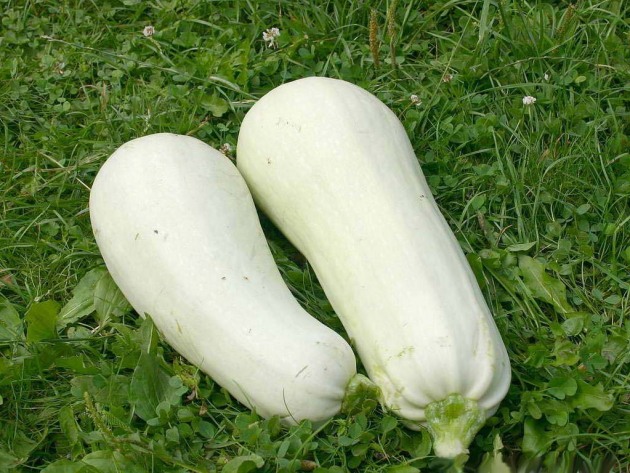
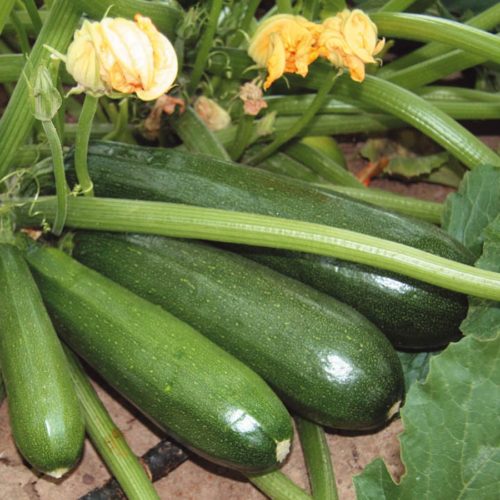
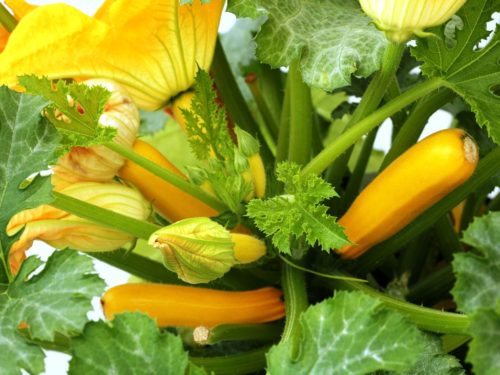
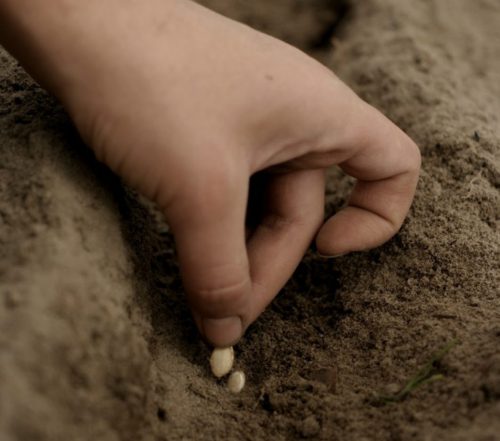
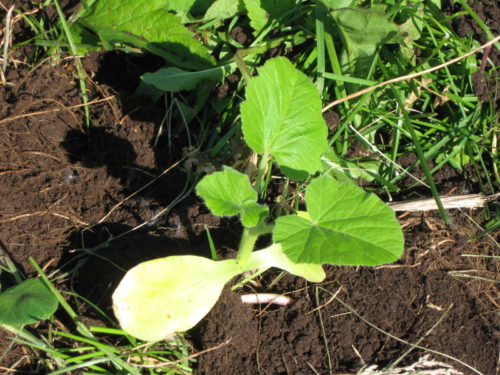
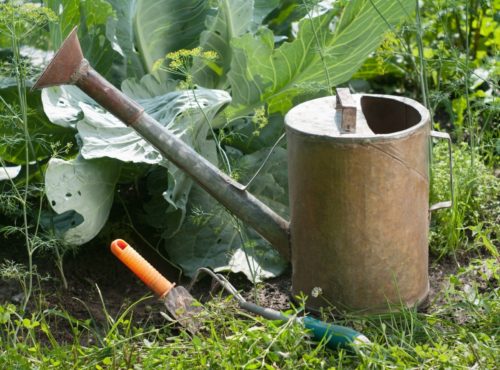

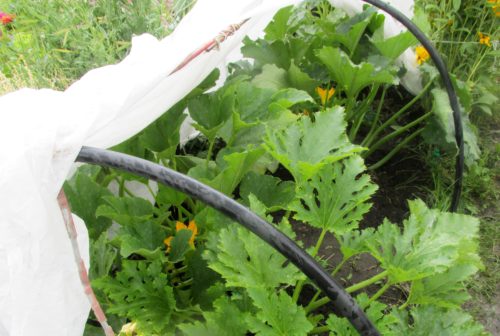












 Start a discussion ...
Start a discussion ...